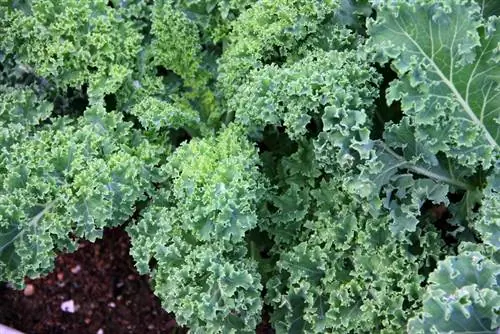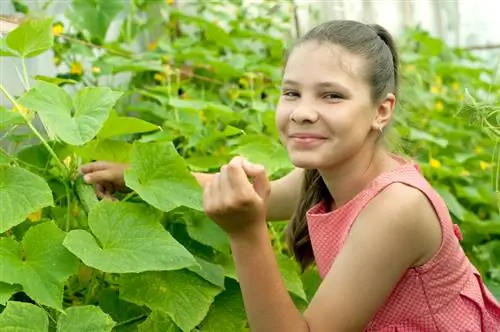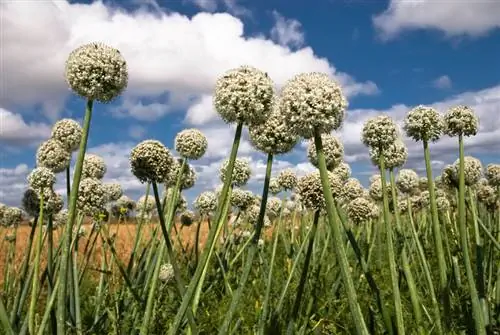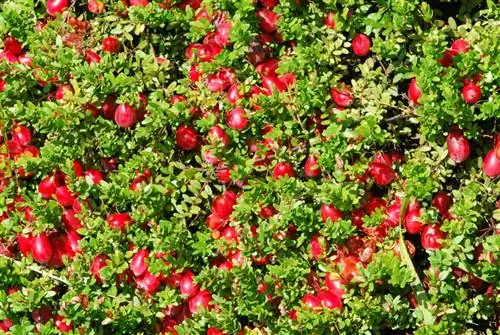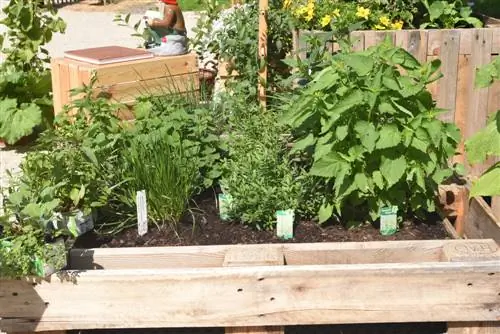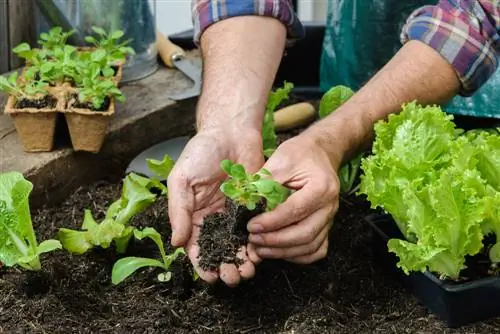- Author admin [email protected].
- Public 2023-12-16 16:46.
- Last modified 2025-01-23 11:19.
Kale is not only extremely delicious, but also extremely he althy and a real eye-catcher in the garden. In addition, compared to other types of cabbage, it proves to be pleasantly “easy to care for”, making it suitable even for completely inexperienced novices in cabbage cultivation.
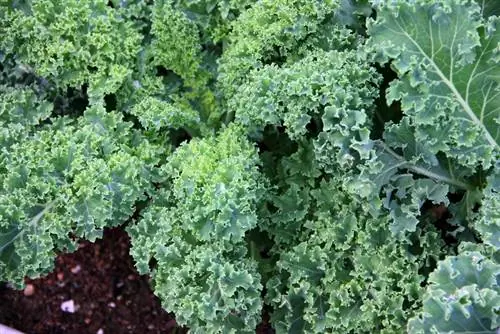
How can I grow kale in the garden?
To grow kale yourself, you should sow from May to June and transplant it into the bed from June. Make sure there is a minimum distance of 40 x 50 cm and prepare the bed with compost and organic fertilizer. The kale can lie in partial shade and is ready to harvest after the first frost.
Cultivation & Harvesting
Kale is a so-called winter cabbage that can even survive frost and snow without damage. In fact, it should only be harvested after the first frost as this is the only way it can fully develop its flavor. As a result, kale proves to be the perfect follow-on seed after early potatoes and other plants, which are harvested from the end of June to the beginning of August.
Since kale has a similarly high nutrient requirement as almost all other types of cabbage, the bed should be prepared with compost and organic fertilizer at the latest in the event of a subsequent sowing. If necessary, well-rotted manure, horn shavings and castor meal or dried cattle dung can also be added. However, it is important to note that fertilizer can have a direct effect on the taste and smell of kale, which is why raw manure should not be used under any circumstances. It is also recommended to add some algae lime to the planting hole directly when planting, which will prevent the so-called clubroot.
The sowing itself should be done from May to June either in a cold frame, in a greenhouse or in the house on the windowsill. Alternatively, young plants can of course also be purchased from specialist retailers. From June onwards, the young plants can be transplanted onto the actual bed. It is important that a minimum distance of 40 x 50 cm is maintained when planting. Although the young plants may still appear very delicate, it should be borne in mind that the fully grown plants with their wide-spreading shoots will be of considerable size. With regard to the location of the bed, it should be noted that, unlike other types of cabbage, it can also be in partial shade. This applies at least if the kale is not planted in a mixed culture with particularly “sun-hungry” plants.
Suitable plants for mixed crops
- Celery and tomato plants, which deter cabbage white butterflies and other pests thanks to their intense smell.
- Herbs (e.g. coriander, caraway and chamomile) that improve the aroma of the kale.
- Peas
- Leek
- Potatoes
- Spinach and salads
- other types of cabbage
Tips & Tricks
If you want to grow kale yourself in the garden, you should protect the young plants from the so-called cabbage white butterfly using a garden net, especially during the month of May. It is also advisable to sprinkle the plants with ground rock or wood ash to protect them from lice. Another tip is to only harvest the green leaves at the beginning of the harvest season and only harvest the cabbage heart at the end. It is also advisable to leave the trunk of the plant standing so that new sprouts can form on it next spring.

